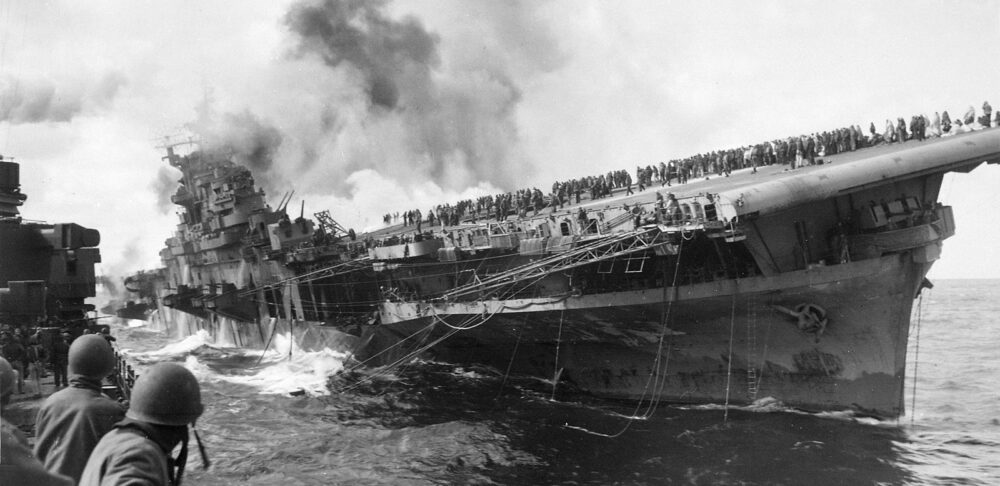1957 was a year of panic. Upon hearing the news that the Soviet Union had successfully launched both Sputnik and the R-7 Intercontinental Ballistic Missile, American citizens, military planners, and policymakers looked to the sky with fear. Both launches were the first of their kind, the heavens had become a battleground, and Americans felt exposed and vulnerable. In the 65 years since, we have learned that the missile gap was the product of faulty intelligence reports, culminating in a misallocation of military spending. Today, we face a similar misstep.
In October 2021, China tested a nuclear-capable hypersonic missile, circling the globe in low orbit before landing 24 miles off its target. [1] As was the case in 1957, the test caught American intelligence by surprise. Like R-7, this test has created fears of an existential danger exposing military unpreparedness. [2] [3] General Mark Milley, Chairman of the Joint Chiefs of Staff, went so far as to describe the test as “very close” to a “Sputnik moment” for the United States. [4] The fear is understandable. Hypersonic missiles capture the public imagination in a way that only a few past weapons have. The prospect of thermonuclear weapons arriving on American soil challenges American security expectations in ways not seen since discussion of space militarization in the late Cold War. However, much of the discussion surrounding these weapons was, and remains, exactly that: public imagination.
A hypersonic missile is a projectile which travels at speeds of Mach 5 and higher — five times faster than the speed of sound (3836 mph), which is about 1 mile per second. These are speeds significantly faster than the Tomahawk cruise missile – the U.S. Navy’s typically deployed solution for long range threats – which is subsonic, travelling at only 550 mph. Intercontinental ballistic missile’s (ICBM) travel at faster speeds than the world’s deployed hypersonic missiles, but the unique threat of their maneuverability and atypical flight path may allow them to evade missile defenses, a potential game changer in crafting a modern and effective military strategy.
Successful hypersonic tests by our adversaries are not harbingers of impending doom. They do not negate the doctrine of mutually assured destruction and the capability of second strike which has discouraged nuclear conflict for decades. The maneuverability of these weapons, although troubling to missile defenses, does nothing to prevent American retaliation: the primary deterrent to any nuclear conflict. Furthermore, fears that hypersonic missiles provide strategic advantage to our adversaries in the prospect of a first strike are misplaced. The sheer volume of hypersonic missiles necessary to successfully execute a neutralizing strike against the United States is enormous. It would be an expensive, protracted, and easily recognizable arms buildup, providing America and its allies time to adapt their arsenals, defense technology, and nuclear strategy.
Hypersonic missiles are useful for one thing above all else in a conflict with the United States: they threaten American naval primacy and its ability to project power in the Pacific. American radar and missile defense systems are underequipped to identify and intercept incoming hypersonic missiles. [5] Against these weapons, expensive vessels become sitting ducks to Chinese strikes from the mainland. Carriers and other naval assets would become virtually worthless under these conditions. The carrier monopoly falls apart, and the United States’ capacity to carry on a distant conflict, just miles away from the Chinese coastline, dissolves.
Modern carrier groups are equipped with advanced air-and-missile defense systems such as Aegis, which is effective at intercepting cruise and ballistic missiles. However, analysts fear that the maneuverability of hypersonics poses a unique threat to these currently deployed defense assets. New reports from the Center for Strategic and Budgetary Assessments assert that these new missiles, if deployed to maximum capacity, would significantly lower or negate the effectiveness of U.S. air defenses even if the carrier group were operating as far as 1,000 nautical miles from the launch site. [6] To remedy this vulnerability, the Navy must invest more heavily in missile interception technology. This means making improvements to currently deployed missile defense systems or investment in the development of new technologies such as hypervelocity projectile systems like electromagnetic railguns or directed energy weapons like lasers. Additionally, bolstering the U.S. Navy’s electronic jamming and spoofing capabilities makes the task of locating and striking carrier groups significantly more difficult for adversarial military forces, helping to secure the safety of the Navy’s crown jewel, our aircraft carriers. They are essential tools in deploying American military resources in faraway theaters, a capability that the importance of which cannot be understated. Although they may be sitting ducks now, careful and effective investment in missile defense can restore aircraft carriers’ utility and security in conflict with capable adversaries.
In the same vein, the United States must reorient its investments to better respond to the changing technologies in our adversaries’ arsenals. We must supplement spending on big-ticket items like new aircraft carriers, fighters, and or bombers with greater investment in new technologies and capabilities. Resources ought to be allocated to enable a larger investment in offensive cyber capabilities which limit the enemy’s ability to strike, cyber defensive capabilities which allow for the maximum deployment of military technologies, satellites which bolster our ability to identify and intercept incoming threats, and smaller, more mobile ships which distribute our forces and build our fleet’s resilience. Additionally, investment in hybrid capabilities such as artificial intelligence (AI), drones, and low-cost defensive arrays for our Pacific allies has the potential to significantly improve not only our offensive capabilities in distant theaters, but also the cost-effectiveness of our military planning more generally. These are the weapons that will win wars in the twenty-first century, as “carrier killer” missiles become commonplace, and more damage can be done to a country’s infrastructure sitting behind a computer than in the cockpit of a fighter jet.
Military planners and defense contractors will correctly argue that investing in big-ticket items is essential to an effective hybrid warfare strategy. Indeed, it would be unwise to cease investment in these areas. The aircraft carrier has been an indispensable tool in the projection of American military power, and as the Indo-Pacific becomes the centerpiece of American military strategy moving forward, they will be even more crucial to our ability to wage war against a highly capable military power like China. However, when investment in artificial intelligence fails to top even $1 billion and each Ford-class carrier costs nearly $13 billion to build, it is clear the U.S. military is changing too slowly. [7] [8]
Thus, today’s “missile gap” should not be thought of as an omen of our annihilation, but rather as an opportunity for a strategic reorientation and a greater investment in new technologies of war. In 1949, scientist and innovator Vannevar Bush argued that technological innovation would be necessary to create a new type of military and political power to win the Cold War. [9] Like then, technological superiority today is likely to determine whether the United States is prepared to protect its interests, its regional allies, and a free Indo-Pacific, which has brought unprecedented prosperity to the modern world.
Max Krajacic ’22 is the Director of Finance for the AHS chapter at Indiana University, where he is studying International Law and Political Science with research focuses in nuclear policy and Chinese politics.
—
Notes:
[1] Demetri Sevastopulo; Kathrin Hille, “China Tests New Space Capability with Hypersonic Missile,” Financial Times, 16 October 2021, https://www.ft.com/content/ba0a3cde-719b-4040-93cb-a486e1f843fb.
[2] Mark Lewis, “Opinion: A Serious Threat to our Defense Posture,” Washington Post, 25 October 2021, https://www.washingtonpost.com/opinions/letters-to-the-editor/a-serious-threat-to-our-defense-posture/2021/10/25/143f3c30-336f-11ec-8036-7db255bff176_story.html.
[3] Rep. Mike Rogers, “Rogers Statement on Advanced Chinese Missile Test,” House Armed Services Committee, 18 October 2021, https://republicans-armedservices.house.gov/news/press-releases/rogers-statement-advanced-chinese-missile-test.
[4] David Sanger; William Broad, “China’s Weapon Tests Close to a ‘Sputnik Moment,’ U.S. General Says,” The New York Times, 27 October 2021, https://www.nytimes.com/2021/10/27/us/politics/china-hypersonic-missile.html.
[5] Kelley Sayler, Stephen McCall, “Hypersonic Missile Defense: Issues for Congress,” Congressional Research Service, 26 January 2022, https://sgp.fas.org/crs/weapons/IF11623.pdf.
[6] Bryan Clark et al., “Regaining the High Ground at Sea: Transforming the U.S. Navy’s Carrier Air Wing for Great Power Competition,” Center for Strategic and Budgetary Assessments, 14 December 2018, https://csbaonline.org/research/publications/regaining-the-high-ground-at-sea-transforming-the-u.s.-navys-carrier-air-wi.
[7] John Keller, “Pentagon to Spend $874 million on Artificial Intelligence (AI) and Machine Learning Technologies Next Year,” Military Aerospace Electronics, 4 June 2021, https://www.militaryaerospace.com/computers/article/14204595/artificial-intelligence-ai-dod-budget-machine-learning.
[8] Fox Van Allen, “Meet the US Navy’s New $13 billion Aircraft Carrier,” CNET, 10 December 2019, https://www.cnet.com/pictures/meet-the-navys-new-13-billion-aircraft-carrier/.
[9] Robert Zoellick, America in the World: A History of U.S. Diplomacy and Foreign Policy (New York, NY: Twelve, 2020), 309.
Image: “Aircraft carrier USS Franklin (CV-13) attacked during World War II, March 19, 1945.” by PHC Albert Bullock, retrieved from https://commons.wikimedia.org/wiki/File:Attack_on_carrier_USS_Franklin_19_March_1945.jpg. This file is a work of a sailor or employee of the U.S. Navy, taken or made as part of that person’s official duties. As a work of the U.S. federal government, it is in the public domain in the United States.



